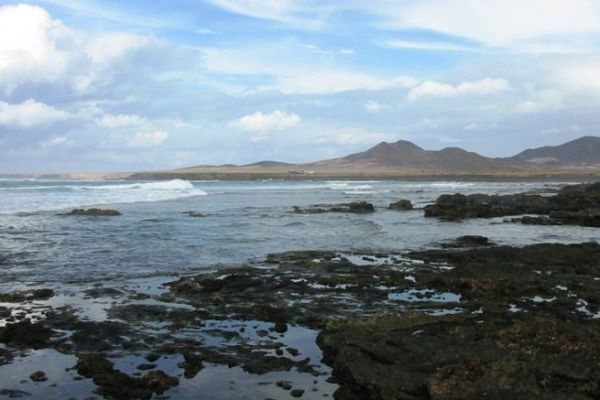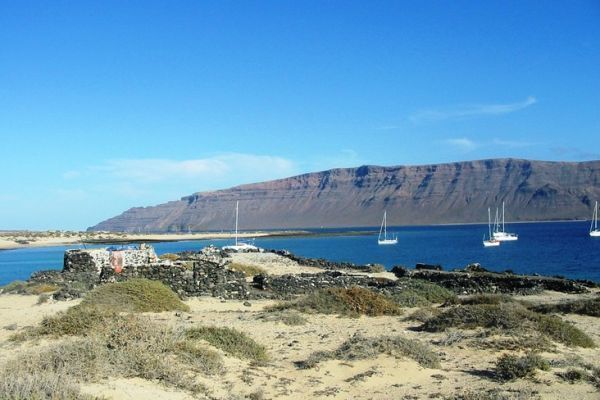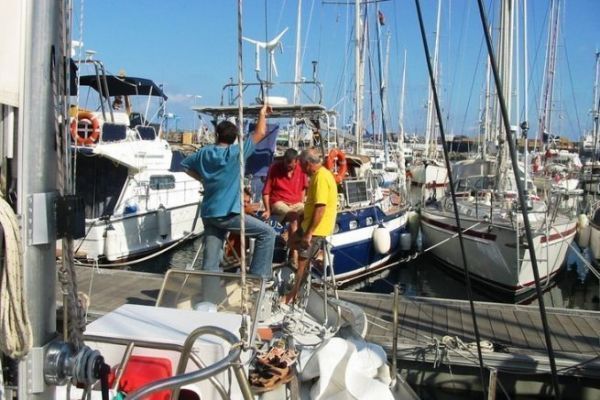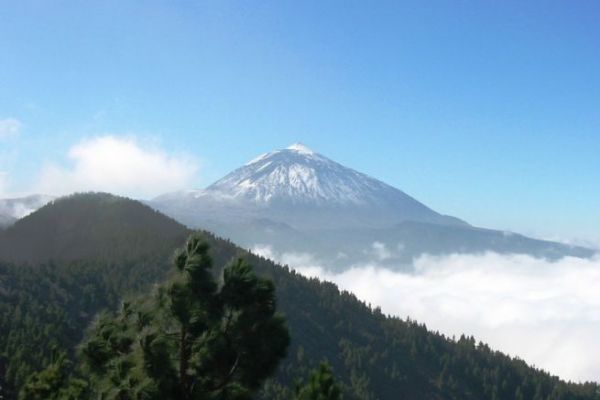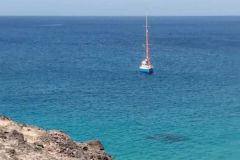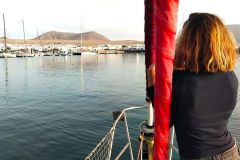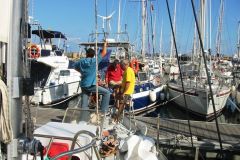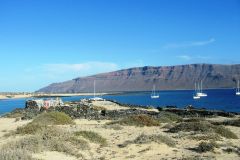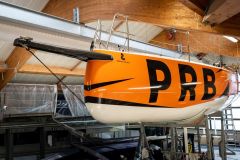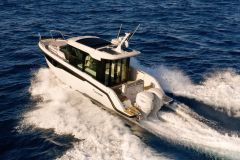Favourable climate and tourist infrastructure
Fuerteventura is characterized by golden sandy beaches and mild weather all year round. Located at a hundred kilometers from the African continent, it is the second largest land of the Canarian group. The chergui the warm wind coming from the Sahara, effectively contributes to maintain pleasant temperatures all year long. The somewhat arid landscapes of the interior have undoubtedly contributed to privilege the activities turned towards the sea.
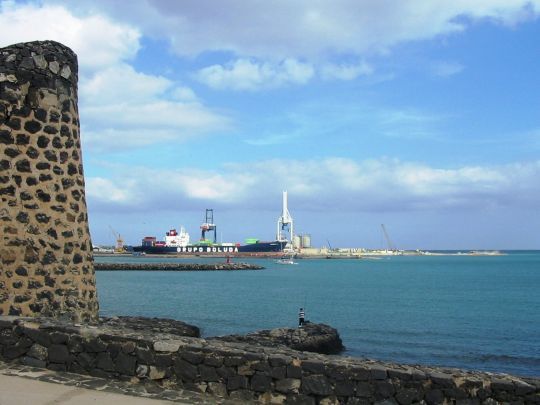
Seaside resorts and tourism are the main resources of the island. However, some inhabitants practice professions related to fishing and agriculture, producing, in particular, wheat and cereals intended for the other islands. With its title of "biosphere reserve", nature offers here a fauna and a flora capable of delighting the amateurs of wild environment.
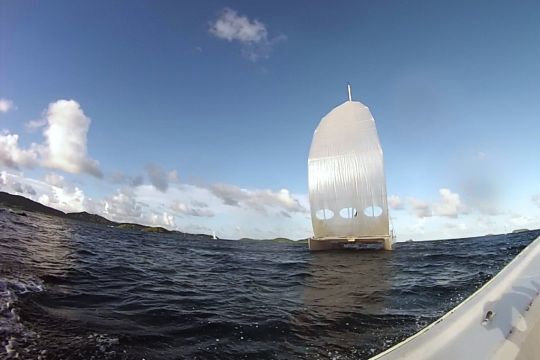
After Lanzarote, a few hours of sailing are enough to reach Fuerteventura. We did it under "Speejonk" alone... A ballet of dolphins accompanied us for a while, playing with the bows, for our great pleasure. The prevailing winds do not facilitate a stop in Corralejo, located in the north-east of Fuerteventura. However, its natural park and its white sand dunes are worth exploring.
The ornithological reserve of Los Lobos
An anchorage in front of the island Los Lobos allows access to this bird sanctuary. Its admirable tranquility is preserved thanks to a judicious daily limitation of the number of authorized visitors. Then, it is change of pace, with a day of sailing against 15 knots of breeze...
A volcanic and arid island
Little greenery on Fuerteventura, volcanic island with arid and rocky ground. The landscapes of the interior contrast with the turquoise waters which lick the immense beaches of blond sand. The wind, often strong, and the numerous coves and inlets attract surfers, windsurfers, snorkelers and many other water sports enthusiasts.
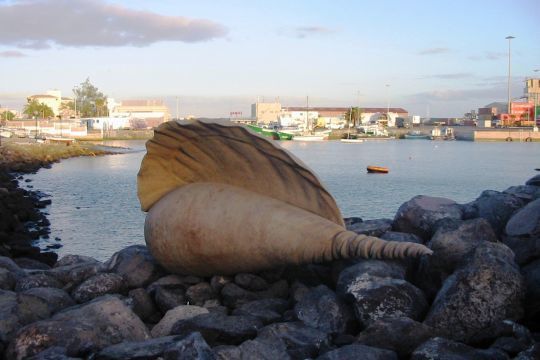
Anchored near the commercial port, the discovery of the capital is just a few propeller turns away. Puerto del Rosario is a lively port city. Despite its unattractive appearance, the city is booming with numerous constructions in progress. Quickly, the rows of houses with whitewashed facades invite you to stroll around. The latter soon proves to be overflowing with attractions, in particular thanks to the very beautiful sculptures that line the Promenade.
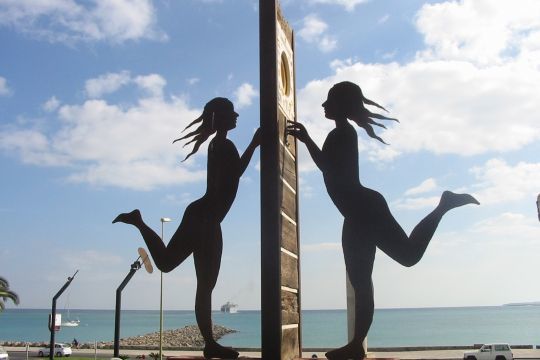
The old town is also worth a visit, with a detour to the Great Church of Nuestra Senora del Rosarioâeuros!
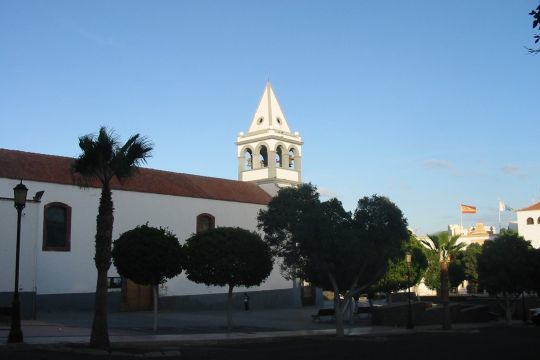
Gran Tarajal, a nice fishing village with a real marina
A lovely seaside promenade, a quiet and not very expensive marina, a few local taverns where good humor accompanies good food make Gran Tarajal a privileged vacation spot. Located in a natural shelter, its invariably calm waters lapping lasciviously on the volcanic sand and black rocks. A beautiful stopover!
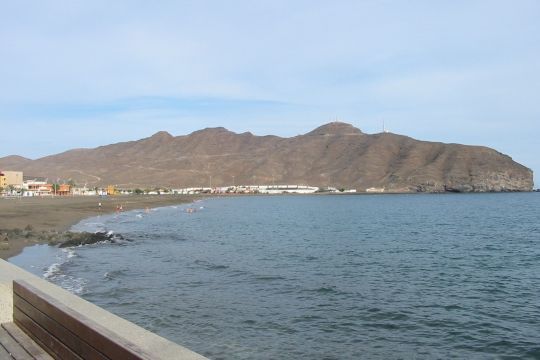
A few more miles and we can dock at a commercial wharf in Morro Jable. In our case, our catamaran shares the space with an imposing ferryboat and everything is fine like that. So, we take the opportunity to do some minor maintenance work. And the glass of white wine, served chilled at the fishermen's bar, at nightfall, is our daily reward.
Stopover in El Puertito at the tip of the island of Fuerteventura
The desert landscape is dominated by the remains of ancient volcanoes. A cluster of white houses, disseminated at the bottom of a lunar cove, it is the village of El Puertitoâeuros! It looks like cubes of feta in a bowl of earth... A few hungry sheep are struggling to forage for a meager pittance in this arid landscape.
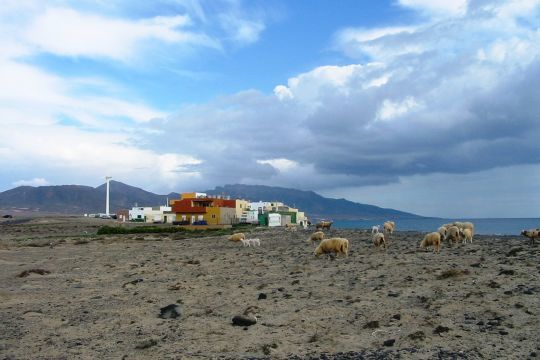
At the tip of the island, it is the last stop before casting off. This spot is very popular with surfers.

 /
/ 